
The National Archives is delighted to announce that we will digitise the National Farm Survey (MAF 32 and MAF 73) in full, thanks to a generous grant of £2.13 million from Lund Trust.
The 1941 National Farm Survey is one of the most comprehensive records of land that we hold in our collection and is a window in time on the UK’s agriculture and land use in the middle of the Second World War. Containing extensive data on over 300,000 English and Welsh farms, the survey is among the most-requested record series at The National Archives.
Currently, the complex filing of the paper record makes it difficult for readers to order and use, with the records only available in physical copy. This project will digitise the series in full and create a new digital cataloguing arrangement to make each farm searchable online.
It will not only make the survey permanently and freely available, but will also improve its accessibility and searchability.
Genealogists, family and local historians will be able to consult the series for their own research, and the project will lay the ground for new analyses by historical economists, geographers and ecologists.
Jeff James, CEO & Keeper of The National Archives said:
“This is a unique opportunity to realise the potential of what was seen as a ‘Second Domesday Book’, a ‘permanent and comprehensive record of the conditions on the farms of England and Wales’. Thanks to this partnership, the National Farm Survey, an enormous database of land ownership and land usage in mid-20th century Britain, will be freely available online to researchers in the UK and globally.”
Andrew Wright, Director of Lund Trust said:
“The National Farm Survey was born out of a wartime need decades ago but still has much to teach us about the land. We are pleased to support making these records accessible to help people in England and Wales to know their local areas better and aid scholars researching our rich agrarian history.”
The project began in October 2023 and will finish in March 2027, with teams from across The National Archives working on the conservation, digitisation, transcription, cataloguing, and publishing of the records. More information about the project’s progress and first image release will be published later this year.
Notes to editors
The National Archives is a non-ministerial government department and the official archive for the UK government, and for England and Wales. We look after and make available to the public our collection of historical records dating back more than 1,000 years, including records as diverse as the Domesday Book and MI5 files. We are also a cultural, heritage and academic organisation which promotes public accessibility to iconic documents while ensuring preservation for generations to come.
Lund Trust supports work that greens people’s lives in the UK and also gives to other causes its donors especially care about. Since 2002, it has given more than £107m.
For more information:
You can find out more about the National Farm Survey in Explore the Collection, or by reading our Research Guide.
Enquiries about the project can be directed to Jack Butterworth, Head of Grants and Funding, by emailing grants@nationalarchives.gov.uk.
For further media enquiries, please email press@nationalarchives.gov.uk or call 020 8392 5277.
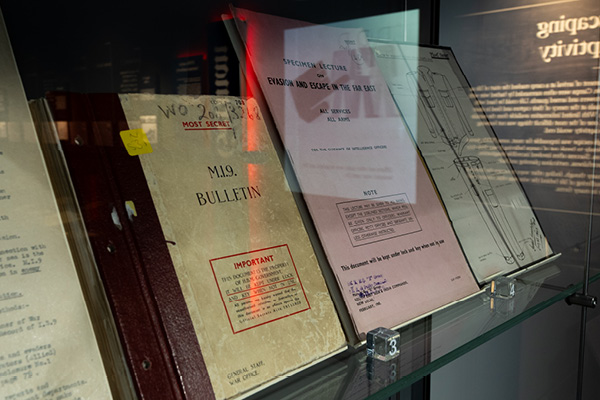

MI9 bulletin TNA W0208/3268
We opened our new exhibition Great Escapes: Remarkable Second World War Captives with a launch event and positive coverage in the media.
At the opening, author and intelligence specialist Helen Fry spoke about researching the secret wartime intelligence organisation MI9 in our records while writing her books.
She recalled discovering that Allied servicemen were advised ‘not to walk in a British way’ if they found themselves in enemy territory – among many other tips they were given on escape and evasion.
The Daily Telegraph gave the exhibition a four-star review, Great Escapes: a revelatory examination of prisoner-of-war camps in the Second World War (telegraph.co.uk)
“I’m fascinated by the enduring passion that exists for this story, but also what you have here,“ was Samira Ahmed’s verdict on Radio 4’s Front Row Front Row – Killers of the Flower Moon star Lily Gladstone, author Leo Vardiashvili and the Great Escapes exhibition at Kew – BBC Sounds
Drawing on our extraordinary range of wartime records, Great Escapes explores the experiences of Prisoner of War (POW)s and civilian internees between 1939-45.
It was inspired by a marathon cataloguing effort by volunteers who worked their way through 200,000 POW records to make them accessible to the public. Their efforts turned up records relating to Ronald Searle, who survived working on the Thai-Burma railway and sketched his fellow prisoners (bringing home around 300 drawings at the end of the war).
They also catalogued wartime records for PG Wodehouse, who managed to write at least one novel while interned in Poland, which are also on display.
But the POW who has most captured the media’s imagination is Carry On actor Peter Butterworth. https://www.bbc.co.uk/news/entertainment-arts-68209738 Interned in Stalag Luft III, he was one of the vaulters who helped distract attention from tunnelling under the Wooden Horse and helped organise The Great Escape the following year. A talented artist, he was involved in forging fake ID papers for escapers and sending coded messages to the authorities in Britain. His story was told in a film about the exhibition which ran on BBC Breakfast and other BBC News outlets.
Hurry down to Bessant Drive, Kew to check out the exhibition yourself. It’s open Tuesdays-Sundays until 21 July and is completely free. No tickets required.
Also available, our dedicated exhibition web pages to discover more and our programme of online events.
Image credit: Exhibition, Spatial, Graphic and AV Design Byfield and Peter L.Dixon
Great Escapes – Remarkable Second World War Captives – The National Archives
https://www.nationalarchives.gov.uk/about/visit-us/whats-on/online-events/
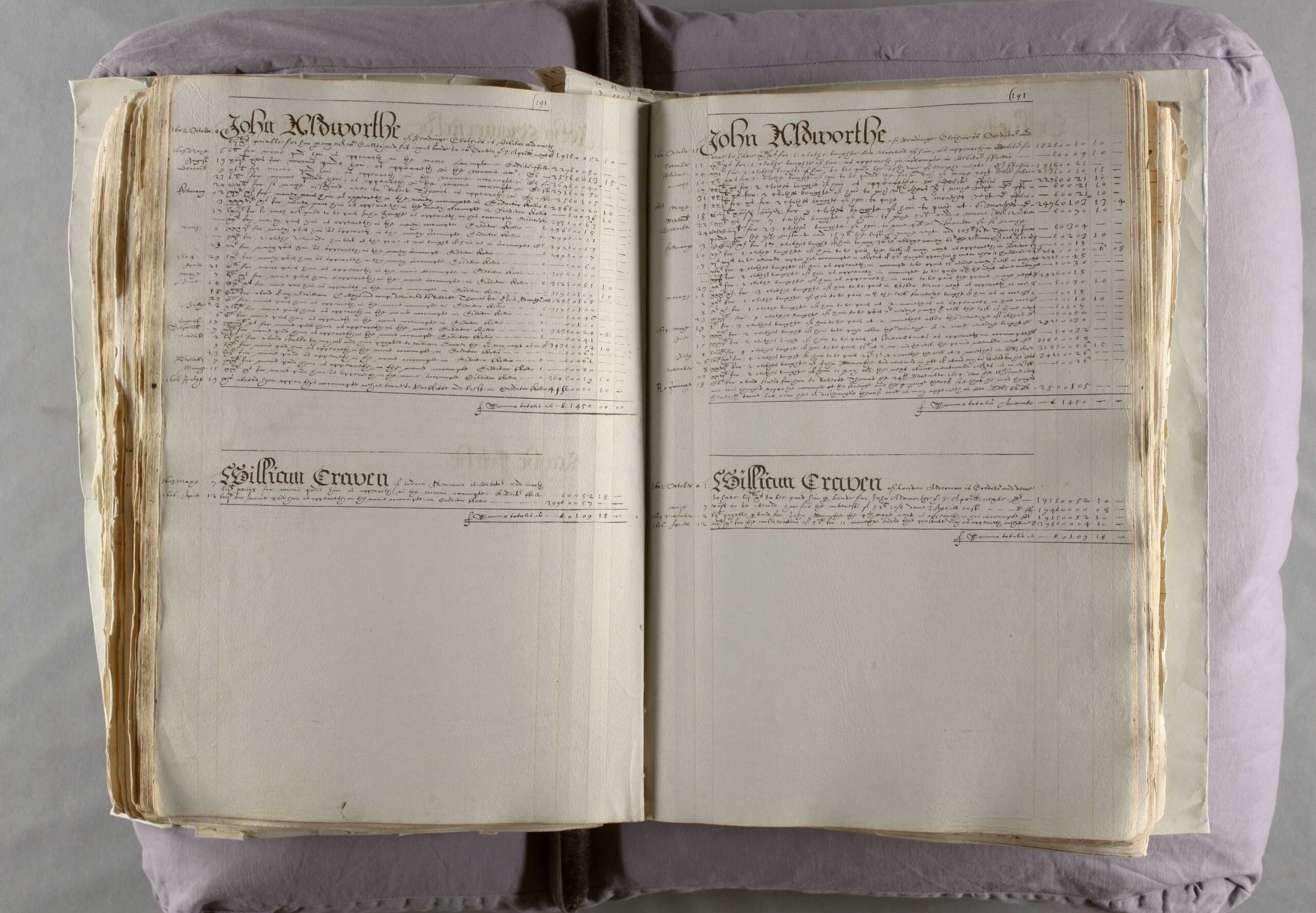
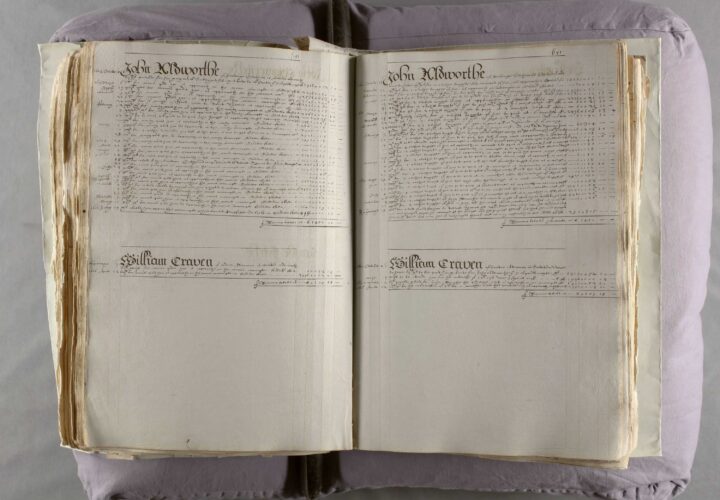
Image: account book belonging to William Calley the elder, draper of London, recording his trade in cloth with individual clients, 1600-1606. Image courtesy of Wiltshire and Swindon History Centre
The following collections of papers have been accepted in lieu of tax by the government:
- Papers of the Tyrell-Kenyon family, Barons Kenyon of Gredington. Further details are set out in case 17 of Arts Council England’s latest Acceptance in Lieu report
- Family and estate papers of the Calley family of Burderop Park, Wiltshire. Further details are also set out in case 41 of the latest Acceptance in Lieu report.
Any library, record office or institution in the United Kingdom interested in acquiring either of these collections should contact Liz Hart, Collections and Manorial Records Manager, at asl@nationalarchives.gov.uk for more information about the application process.
You can also contact us at the following address:
Liz Hart
Archives Sector Leadership
The National Archives
Kew, Richmond
TW9 4DU
Applications for allocation of this material must be received in writing by post or email by Friday 23 February 2024.


Are you interested in helping to lead and shape the work of The National Archives? We are looking to appoint two non-executive members to our Board.
The National Archives is at a transformative moment in its history. Digital records are revolutionising the way that information is preserved and artificial intelligence will change how we interact with data day to day, bringing leadership across government on all aspects of information management.
Alongside this we continue to acquire and preserve new deposits of physical records. We are currently transferring millions of historical records of military service personnel into our care and, from 2024, will welcome the Parliamentary Archives to our site at Kew. The near future also sees changes to our leadership, with the appointment of a new Chief Executive and Keeper.
Our Non-Executive Board Members make a major contribution to shaping The National Archives’ direction and progress. As a member of the Board, your insights will be essential in helping us fulfil our role by providing scrutiny, advice, support and challenge.
We are looking for people who can drive us forward. If you have the experience, enthusiasm and skills to help us reach our goals, we are keen to hear from you.
More information about the role and details of how to apply can be found here

Today we have released Cabinet Office files from 20 years ago covering a range of subjects that crossed the desk of Tony Blair as prime minister.
Some of the issues in the files include:
- Home affairs
- Regional policy
- Relations with other countries
- Meetings with foreign leaders and governments
You can explore the newly released files via our catalogue Discovery. More digitised files will be available throughout the day.
In addition, we have released a collection of Cabinet Office files related to what became known as the ‘Spycatcher’ case. These files from the 1980s reveal government discussion on the planned publication of a memoir by an ex-MI5 officer.
Read more about the case via the links below:
PREM 19/591: This file is primarily concerned with the publication of Chapman Pincher’s book, Their Trade is Treachery, and the allegations made in that book against Sir Roger Hollis, who had served as Director General of MI5 between 1956 and 1965. It links to the controversy which later surrounded Peter Wright’s publication of his book Spycatcher. Peter Wright was believed to have been Chapman Pincher’s chief source.
PREM 19/1951: This is the first of several files concerned largely with proceedings brought by the UK government in Australian courts to prevent the publication of Peter Wright’s book, Spycatcher.
PREM 19/1952: This file contains much detailed information relating to the legal proceedings seeking to restrain publication of Spycatcher in Australia.
PREM 19/1953: This file contains continued consideration of the government’s court action seeking to prevent publication of Spycatcher in Australia, and to restrain publication of Joan Miller’s book, One Girl’s War, in Ireland.
PREM 19/1954: Michael Bettaney was an MI5 officer who attempted to spy for the Soviet Union. He was caught and in 1984 was sentenced to 23 years in prison. This file includes the unfolding decisions made within government in the wake of the case.
PREM 19/2504: This file is largely concerned with government litigation in Australia to prevent the publication of Spycatcher, and government action in Ireland to prevent the publication of One Girl’s War. The possible publication of Spychatcher in the USA is also referred to, and legal action against UK newspapers discussed.
PREM 19/2505: This file is largely devoted to detailed coverage of first instance proceedings in restraint of the publication of Spycatcher in Australia, and the related decision to appeal. The file outlines a determination to identify the source of leaks relating to the appeal.
PREM 19/2506, PREM 19/2507, and PREM 19/2508 continue with the same theme.
PREM 19/2509: The extensive and detailed coverage of various aspects of the government’s litigation in respect of Spycatcher continues in this file, including much discussion of the action taken in New Zealand and in the English and Scottish courts in respect of newspaper publications.
PREM 19/2510: The action brought in the English courts against UK newspapers is covered in depth and this file also includes, among other things, full copies of the government’s case upon appeal to the House of Lords.
PREM 19/2511: This file further details government discussions of a potential appeal in its Scottish legal action against publication of Spycatcher as well as providing extended consideration of the government’s response to, and handling of, the House of Lords’ judgment in respect of the case brought against UK newspapers.
Other digitised files
-
- PREM 19/1951/2 (PDF, 61.48 MB)
- PREM 19/2506/2 (PDF, 130.89 MB)
- PREM 49/785 (PDF, 71.76 MB)
- PREM 49/883 (PDF, 72.09 MB)
- PREM 49/1157 (PDF, 159.33 MB)
- PREM 49/1196 (PDF, 802.32 MB)
- PREM 49/1410 (PDF, 1,261.61 MB)
- PREM 49/1460 (PDF, 115.71 MB)
- PREM 49/1462 (PDF, 87.20 MB)
- PREM 49/1463 (PDF, 91.57 MB)
- PREM 49/1464 (PDF, 152.03 MB)
- PREM 49/1465 (PDF, 179.99 MB)
- PREM 49/1466 (PDF, 95.35 MB)
- PREM 49/1499 (PDF, 164.15 MB)
- PREM 49/1519 (PDF, 182.72 MB)
- PREM 49/1900 (PDF, 143.18 MB)
- PREM 49/1949 (PDF, 184.62 MB)
- PREM 49/2029 (PDF, 163.05 MB)
- PREM 49/2128 (PDF, 6.16 MB)
- PREM 49/2156 (PDF, 90.58 MB)
- PREM 49/2158 (PDF, 89.69 MB)
- PREM 49/2159 (PDF, 88.18 MB)
- PREM 49/2160 (PDF, 90.67 MB)
- PREM 49/2162 (PDF, 163.61 MB)
- PREM 49/2394 (PDF, 360.70 MB)
- PREM 49/2499 (PDF, 179.16 MB)
- PREM 49/2551 (PDF, 85.06 MB)
- PREM 49/2946 (PDF, 308.98 MB)
- PREM 49/2947 (PDF, 496.07 MB)
- PREM 49/2948/2 (PDF, 269.03 MB)
- PREM 49/2949 (PDF, 394.02 MB)
- PREM 49/2967 (PDF, 162.97 MB)
- PREM 49/3009/1 (PDF, 282.42 MB)
- PREM 49/3009/2 (PDF, 241.99 MB)
- PREM 49/3036/1 (PDF, 210.23 MB)
- PREM 49/3036/2 (PDF, 208.61 MB)
- PREM 49/3037 (PDF, 83.74 MB)
- PREM 49/3038 (PDF, 66.81 MB)
- PREM 49/3042 (PDF, 77.31 MB)
- PREM 49/3049 (PDF, 224.34 MB)
- PREM 49/3052 (PDF, 161.68 MB)
- PREM 49/3063 (PDF, 153.06 MB)
- PREM 49/3081 (PDF, 301.96 MB)
- PREM 49/3082 (PDF, 180.76 MB)
- PREM 49/3083 (PDF, 262.31 MB)
- PREM 49/3084 (PDF, 853.01 MB)
- PREM 49/3107 (PDF, 148.59 MB)
- PREM 49/3113 (PDF, 122.87 MB)
- PREM 49/3114 (PDF, 149.37 MB)
- PREM 49/3115 (PDF, 139.21 MB)
- PREM 49/3221 (PDF, 142.58 MB)
- PREM 49/3222/1 (PDF, 138.16 MB)
- PREM 49/3222/2 (PDF, 120.74 MB)
- PREM 49/3282 (PDF, 267.29 MB)
- PREM 49/3285 (PDF, 208.70 MB)
- PREM 49/3295 (PDF, 360.70 MB)
- PREM 49/3296 (PDF, 366.01 MB)
- PREM 49/3352 (PDF, 137.64 MB)
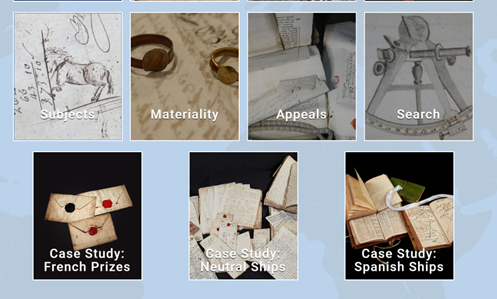
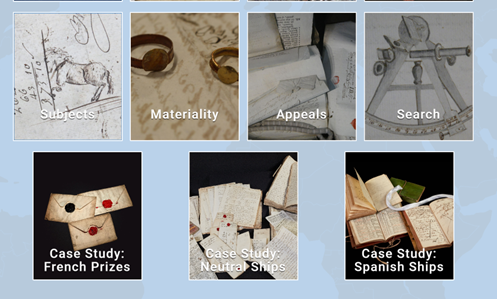
The National Archives in collaboration with Carl von Ossietzky University Oldenburg has launched online thousands of papers from captured Spanish ships which were all taken by the British between 1739 – 1748.
The historic practice of capturing enemy ships during wartime has resulted in a unique collection at The National Archives. Between 1652 and 1815, British privateers and naval vessels captured roughly 35,000 ships, from which they seized hundreds of thousands of papers that survive to this day as the Prize Papers – a “prize” being a captured ship.
Prof. Dr. Dagmar Freist, director, prize papers project Carl von Ossietzky University Oldenburg / Germany said:
‘I am very happy that our collaborative Prize Papers Project between Oldenburg University in Germany, the German Historical Institute in London, and The National Archives UK is now launching its third case study, this time focusing on Spanish Ships. With these case studies we put online and contextualize amazing records which provide a so far unknown everyday live perspective on colonialism and globalization. The rich documents from Spanish ships displayed here are just the first to be presented with many more to follow as the project proceeds.’
Dr Amanda Bevan, Head of Legal Records at The National Archives said :
‘The papers taken from these 130 captured Spanish ships represent a small fraction of the Spanish prize papers still awaiting discovery at the National Archives. As we now work through the papers of the American Revolutionary War, we know we will find many more – ranging from many letters from Peru or Cuba to smaller numbers of papers on ships trading in Europe. It is a really exciting project which will have a profound impact on how Spanish people at home or overseas in the 18th century can be seen and heard anew.’
These records are all unknown to researchers and provide insights into everyday life in Spain as well as detailing the political and military conflicts of the period.
To find out more about the project please visit the Prize Papers Portal: https://portal.prizepapers.de
For more information about the Spanish papers, please visit htps://www.prizepapers.de/case-studies/case-study-spanish-ships
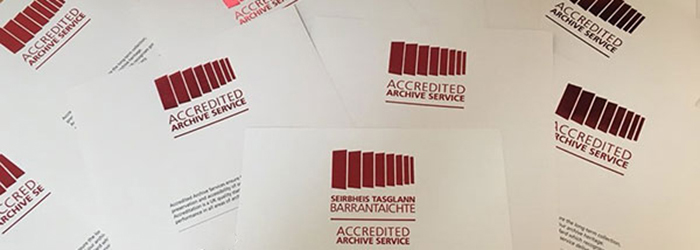
Following a recent Archive Service Accreditation Panel, we are pleased to announce that the following archive services have been awarded accreditation for the first time:
- Archaeology Data Service
- Britten Pears Arts
- The Camping and Caravanning Club Archive
- Oxford University: Lincoln College Archive
- Oxford University: New College Archive
- University of Exeter Special Collections
Archive Service Accreditation is the UK-wide standard for archive services. By attaining accreditation, archive services demonstrate that they meet the standard for collections management and access to collections, showing resilience and the ability to manage changing circumstances successfully.
All accredited archive services must apply again for accreditation six years after their initial award to retain their accredited status. By achieving accreditation for a second time these archive services have demonstrated a commitment to continuing development of their service and the effective management of change.
At the same panel the following archive services were awarded accreditation for the second time:
- Hertfordshire Archives and Local Studies
- National Monuments Record of Wales
- Orkney Archive
- Royal College of Nursing Library and Archive Service
- Royal College of Obstetricians and Gynaecologists
- The Keep
- Thomas H Manning and Scott Polar Research Institute Picture Library
- University of Reading Special Collections
Archive Service Accreditation is supported by a partnership of the Archives and Records Association (UK), Archives and Records Council Wales, National Records of Scotland, Public Record Office of Northern Ireland, Scottish Council on Archives, The National Archives, and the Welsh Government through its Museums, Archives and Libraries Wales division.
View the full list of accredited archive services
Find out more about Archive Service Accreditation
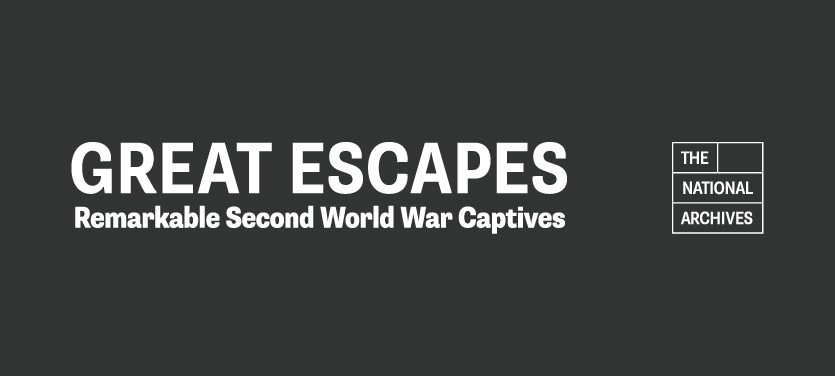
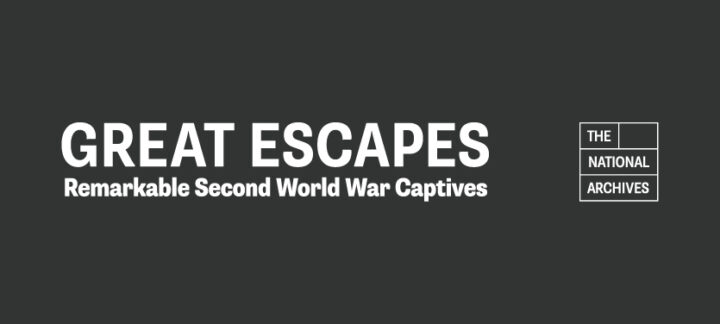
We can today announce our upcoming exhibition, Great Escapes: Remarkable Second World War Captives, opening in February 2024.
During the Second World War, hundreds of thousands of people were held against their will. Service personnel captured in conflict became prisoners of war, and civilians were confined in internment camps if they were believed to be a threat to the state.
Very few people physically escaped their situation, but despite often living in punishing conditions, those held captive often sought escape through other means. This exhibition explores the human spirit of hope and resilience during times of captivity, and reveals the surprising stories of an under-told and under-researched area of our history.
The cataloguing of around 200,000 record cards containing personal details of individuals held by the German authorities during the Second World War has allowed new stories to come to light to be told for the very first time. Whether it be learning a new language, making disguises, writing to loved ones, or creative endeavours such as putting on elaborate theatre performances, a sense of community offered a glint of light among the suffering.
More well-known escape attempts are also examined, with the 80th anniversary of what we now know as ‘the Great Escape’ occurring in March 2024. The escape from Stalag Luft III was made famous by the film starring Steve McQueen. Also included are details of the British Officer Airey Neave’s attempts to escape from Colditz Castle and his eventual success dressed as a German soldier in 1942.
Dr William Butler, a curator of the exhibition, and co-author of the associated book ‘Captives: Prisoners of War and Internees 1939-1945’, said: ‘Many people will have heard the story of the Great Escape, thanks to the 1963 film, but our exhibition also reveals stories not yet told.
‘Great Escapes is about the agency of individuals, their courage, resilience, and ingenuity in the face of adversity. We hope to show visitors how prisoners and internees made decisions in order to feel human, with community and activity groups being formed “behind the wire”, whether they be escape committees or choirs.
‘Many of these stories are about hope despite the incredibly difficult circumstances prisoners and internees faced during the Second World War.’
Great Escapes will be divided into three areas bookended by the 1929 Geneva Convention and its updated version agreed in 1949. The first area will explore the legal framework for the 1929 Convention and tell the story of Military Intelligence Section 9 (MI9), a highly secret British government agency established in 1939 to help military personnel evade and escape capture.
The second area will cover the stories from individual prisoners and internees under British, German, and Japanese authority during the Second World War. The third area will examine how prisoners were dealt with at the end of the war and how the experience of the conflict led to the Geneva Convention being rewritten in 1949.
Steve Burgess, Head of Events and Exhibitions at The National Archives, said: ‘We must thank our team of volunteers at The National Archives who catalogued around 200,000 War Office records which has allowed us to uncover new material and tell stories for the first time. Through these records, we gain a sense of the individuals and communities that formed wherever they may be.’
Great Escapes: Remarkable Second World War Captives opens on Friday 2 February 2024 and will run until 21 July 2024. The exhibition will be free entrance to all.
Sign up to our mailing list or follow us on social media to find out more about the exhibition as it is released and book tickets to our accompanying programme of events and activities.
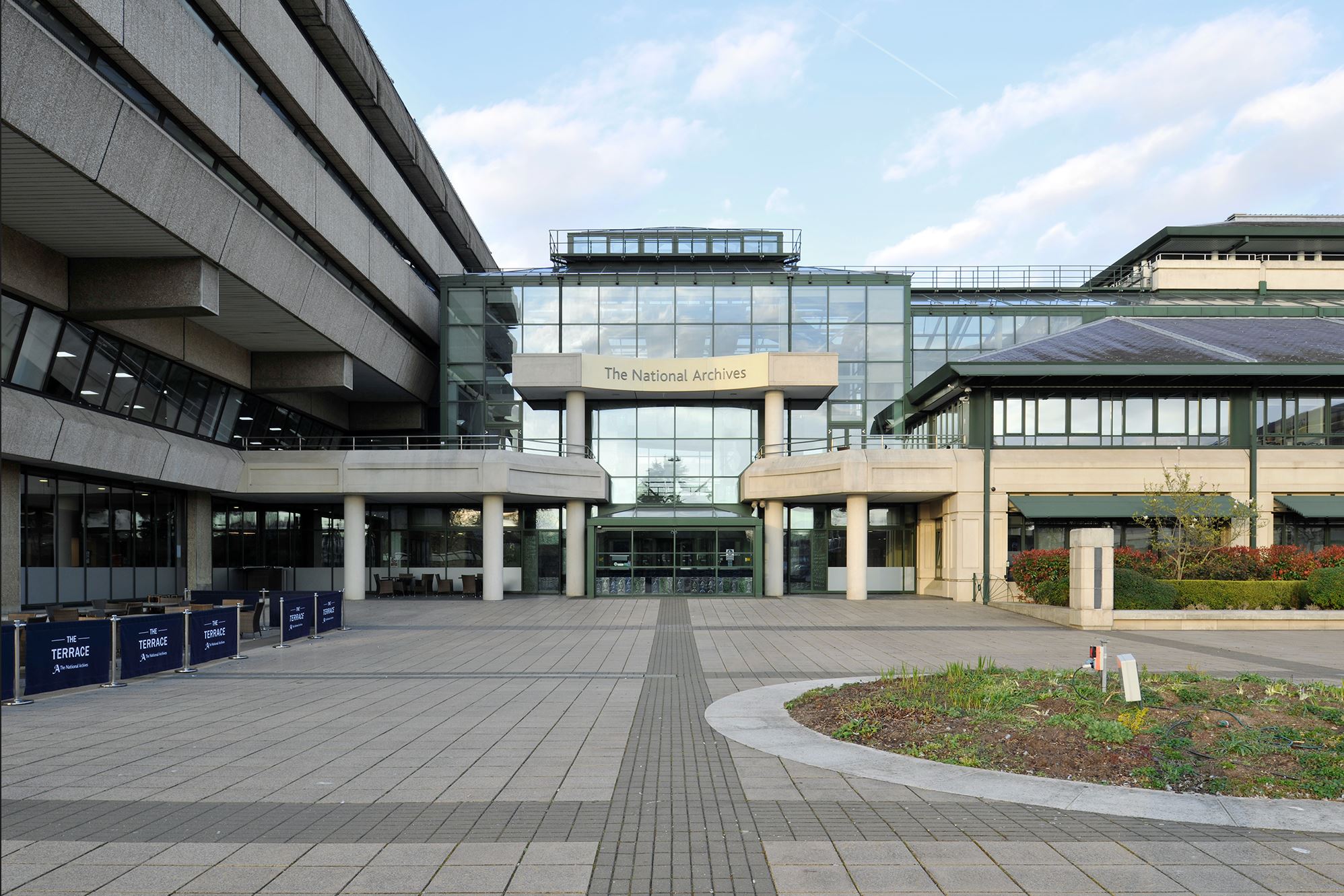
The Chief Executive of The National Archives, Jeff James, will leave his post in summer 2024 when his current term ends.
Jeff James said: ‘By summer 2024 I will have led this wonderful organisation for ten years and am now approaching the end of my term in post.
‘It has been a huge honour to lead The National Archives and I want to pay tribute to the exceptional dedication and expertise of colleagues who preserve and promote this world class collection that spans 1,000 years of history, from the Domesday Book to tweets from Downing Street.
‘I would like to thank everyone at The National Archives, the wider archive sector and international archiving community and our colleagues in DCMS for their championing of documentary heritage and for all the support they have shown me personally.
‘There is still a huge amount of work to do over the coming months and my focus will be on delivering the organisation’s objectives and enabling a smooth transition.’
Professor Andrew Wathey, Chair of The National Archives Board said: ‘I am extremely grateful to Jeff for the service he has provided as Chief Executive and Keeper of The National Archives over the last decade. In 2014 he set out a vision to “change the way people think about archives” through a bold programme of digital transformation, sector engagement and inclusive public programming, and this he has truly delivered upon.
‘He has overseen a successful period in the life of a great national institution with a long history and we now look forward with confidence to a new exciting chapter, made possible by the foundations he has put in place.’
Polly Payne, Director General at The National Archives’ parent department the Department for Culture Media and Sport said: ‘The Chief Executive and Keeper of The National Archives is a role which straddles various sectors and is the guardian of our national memory.
‘Jeff has taken The National Archives and the wider archive sector forward with energy and confidence as an active and engaged member of the DCMS family. He has ensured trust in our official record system and widened appreciation for this important national resource.’
The recruitment process for the next Chief Executive and Keeper of The National Archives is underway.
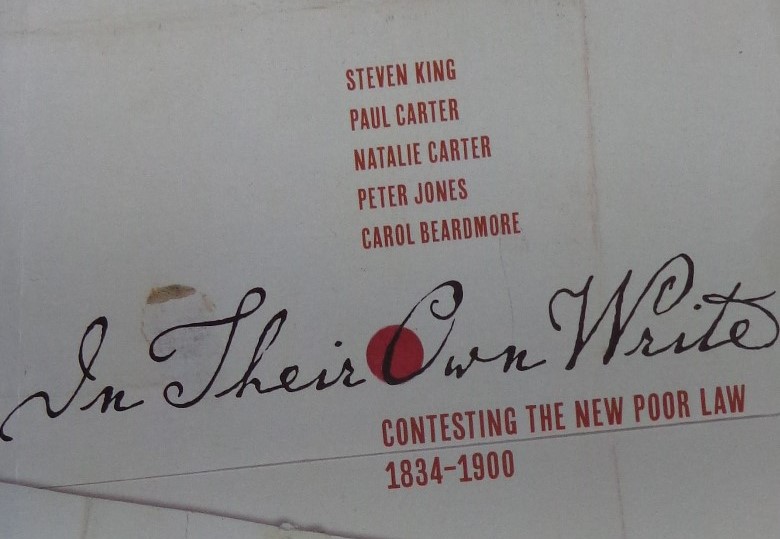
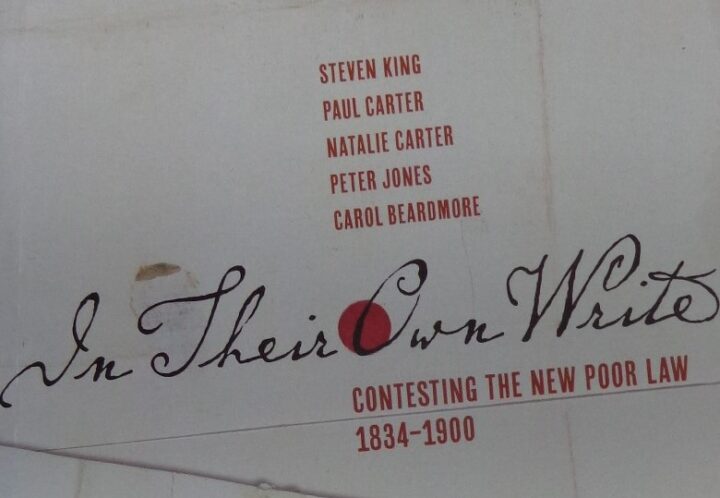
A major new book on nineteenth century poverty co-authored between staff at The National Archives and Nottingham Trent University has won the North American Victorian Studies Association’s (NAVSA) prize for best book in the field published in 2022.
In Their Own Write: Contesting the New Poor Law, 1834–1900, by Steven King, Paul Carter, Natalie Carter, Peter Jones and Carol Beardmore, focusses on letters from English and Welsh paupers, the wider poor and their advocates, that are held at The National Archives in record series MH 12: Poor Law Union Correspondence. For the first time the history of nineteenth century English and Welsh poverty has been produced based on the testimony of the poor themselves.
Dr Paul Carter, Principal Records Specialist, Collaborative Projects, The National Archives said:
‘We are thrilled that our book has been recognised in this way and are honoured that the North American Victorian Studies Association (NAVSA) has chosen our volume as best book in field. This underpins the importance of archival records research in surfacing voices not usually heard. In most cases, history records the views of the political and economically powerful; but in this case we have the concerns, fears and demands of the poor laid bare giving us an exceptionally clear and rich understanding of what life was like for the poor in Victorian times.’
Professor Steven King, Professor of Social and Economic History, Nottingham Trent University said:
‘The main theme of the book examines and explains how the Victorian poor (including those in workhouses), used letter writing to the central poor law authority in London to try and make their life and living conditions better. They complained of ill treatment, medical neglect, lack of food, punishment regimes etc. as well as making positive arguments for such things as paid employment through public works and rights for medical care. These instances of letter writing demonstrate an agency not often attached to the Victorian poor – but one we have demonstrated again and again throughout this book.’
In their citation, the judges for the prize stated that the book provides a “…history from below of the New Poor Law [that] ensures that the voices of the poor will necessarily be part of future studies of social welfare, government administration and information management, disability, gender politics, and Victorian periodicals and media”.
There are many thousands of letters, petitions, witness statements etc. by which the poor complained of their treatment when bound by necessity to ask for “poor relief”. Although the Victorian poor had a legal right to claim relief it was less explicit in the legislation that they have a right to relief. Therefore, relief itself was contested throughout the Victorian period. These records, and thus the voices of the poor themselves, were bound into the 16,741 (rather large) volumes of poor law correspondence now held by The National Archives. The vast majority of these letters, petitions and statements, have been previously overlooked and underused until the commencement of our Arts and Humanities Research Council (AHRC) funded project. The historic poor then were rarely silent about their condition – they have been shouting at us from the archive.